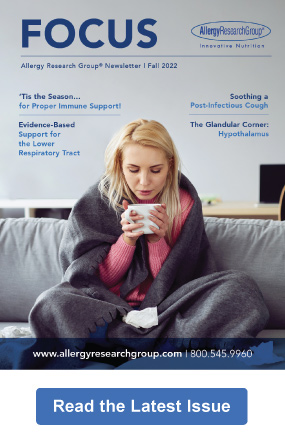The Science Behind Some Liver-Loving Herbs: Milk Thistle and Berberine to the Rescue!
Share this post
Protecting the body against excesses and toxins associated with daily living
There are many herbs with a history of use for supporting liver function and metabolic regulation with exposure to toxins or excessive consumption of alcohol or food. Modern analytical techniques and clinical studies have helped us to further understand the potential health benefits of two important botanically-derived substances: silymarin and berberine.
Milk thistle (Silybum marianum)
Milk thistle is possibly the best-known botanical for its potent liver-protective benefits. Silymarin, a mixture of the active constituents of milk thistle, and silibinin, the most active compound found within it, have been shown in animal studies to reduce liver injury caused by acetaminophen, alcohol, iron overload, and radiation among other known liver-toxic substances.[1] Silymarin has also been shown to increase levels of glutathione, a powerful antioxidant, in both the liver and intestines, and reduce lipid peroxidation, which leads to damage of the cellular (lipid) membranes, altering their function, and possibly causing cellular death.[2],[3]
Silymarin has also been shown to increase levels of glutathione, a powerful antioxidant, in both the liver and intestines, and reduce lipid peroxidation, which leads to damage of the cellular (lipid) membranes.
Silibinin and silymarin have been shown to activate a nuclear bile acid receptor known as farnesoid X receptor (FXR) which down-regulates inflammatory pathways.[4] FXR is a key regulator of bile acid, glucose, and lipid balance in the body – all of which are important for metabolic health.[5] Not surprisingly, with activation of FXR in mice, milk thistle ameliorated insulin resistance (the hallmark of diabetes), dyslipidemia (high cholesterol), and inflammation due to high-fat diet (HFD) feeding. Medications which interact with FXR similarly to these milk thistle derived compounds are also being investigated for the treatment of non-alcoholic fatty liver disease (NAFLD) and its associated hepatic changes.[6]
Clinical studies have also shown benefits to liver health and function with milk thistle supplementation. A 2017 meta-analysis found that treatment with milk thistle significantly reduces alanine aminotransferase (ALT) and aspartate aminotransferase (AST) by −5.08IU/L and −5.44IU/L, respectively, in patients with NAFLD.[7] Dosages used in the studies surveyed in this meta-analysis ranged from 140 mg once a day to 200 mg three times a day, for a duration of 8 to 24 weeks. Additional parameters that were observed to be improved included fasting blood sugar, lipid profile, and serum insulin levels.
Berberine
Berberine, the orangish-yellow alkaloid found in botanicals such as Oregon grape root and bark, goldenseal, and barberry, is another substance that has numerous mechanisms by which it may help protect the liver, particularly against NAFLD.[8],[9],[10]
Berberine reduces intestinal permeability and improves tight junction integrity, reducing the passage of lipopolysaccharide (LPS) into circulation.
Berberine is well known for its antidiabetic and lipid-balancing effects,[11] both of which impact fatty liver changes. The direct actions of berberine, however, do not stop there. Berberine has been shown to alter hepatic metabolism-related gene expression, supporting bile acid metabolism via FXR-related pathways.[12] In animal studies, berberine has been shown to have the effect of preventing HFD-associated obesity and liver triglyceride accumulation (a hallmark of NAFLD) in wild-type (normal) mice, but not in those that had the genetic elimination of intestinal FXR expression.
Berberine also reduces intestinal permeability and improves tight junction integrity, reducing the passage of lipopolysaccharide (LPS) into circulation.[13],[14] High systemic levels of LPS (known as endotoxemia) plays a significant role in cholestasis and the related liver damage.[15],[16] Berberine has also been shown to suppress obesity-associated inflammation and hepatic steatosis in mice via pathways related to an inflammatory complex known as JNK1,[17] a protein kinase implicated in the development of steatohepatitis.[18] JNK1 is strongly activated by environmental stressors and pro-inflammatory cytokines.
The benefits of berberine in NAFLD have also been demonstrated clinically in a randomized, parallel controlled, open-label clinical trial.[19] In patients with NAFLD, berberine was shown to restore normal hepatic architecture, lipid, and blood sugar metabolism, with significant improvements seen over the population who only implemented lifestyle changes.
In our modern world, where the toxins we take in are often related to the foods we eat and beverages we consume, both milk thistle and berberine may be of benefit in supporting health on a long-term basis.
Click here to see References
[1] Abenavoli L, et al. Milk thistle in liver diseases: past, present, future. Phytother Res. 2010 Oct;24(10):1423-32.
[2] Valenzuela A, et al. Selectivity of silymarin on the increase of the GSH content in different tissues of the rat. Planta Med. 1989 Oct;55(5):420-2.
[3] Rui YC. Advances in pharmacological studies of silymarin. Mem Inst Oswaldo Cruz. 1991;86 Suppl 2:79-85.
[4] Gu M, et al. Silymarin Ameliorates Metabolic Dysfunction Associated with Diet-Induced Obesity via Activation of Farnesyl X Receptor. Front Pharmacol. 2016 Sep 28;7:345.
[5] Ali AH, et al. Recent advances in the development of farnesoid X receptor agonists. Ann Transl Med. 2015 Jan;3(1):5.
[6] Traussnigg S, et al. Efficacy and safety of the non-steroidal farnesoid X receptor agonist PX-104 in patients with non-alcoholic fatty liver disease (NAFLD). Zeitschrift für Gastroenterologie. 2017 May;55(05):A71.
[7] Zhong S, et al. The therapeutic effect of silymarin in the treatment of nonalcoholic fatty disease: A meta-analysis (PRISMA) of randomized control trials. Medicine (Baltimore). 2017 Dec;96(49):e9061.
[8] Birdsall TC, et al. Berberine: therapeutic potential of an alkaloid found in several medicinal plants. Altern Med Rev. 1997;2:94-103.
[9] Imanshahidi M, et al. Pharmacological and therapeutic effects of Berberis vulgaris and its active constituent, Berberine. Phytother Res. 2008 Aug;22(8):999-1012.
[10] Zhu X, et al. The Potential Mechanisms of Berberine in the Treatment of Nonalcoholic Fatty Liver Disease. Molecules. 2016 Oct 14;21(10).
[11] Zhang Y, et al. Treatment of type 2 diabetes and dyslipidemia with the natural plant alkaloid berberine. J Clin Endocrinol Metab. 2008 Jul;93(7):2559-65.
[12] Sun R, et al. Orally Administered Berberine Modulates Hepatic Lipid Metabolism by Altering Microbial Bile Acid Metabolism and the Intestinal FXR Signaling Pathway. Mol Pharmacol. 2017 Feb;91(2):110-122.
[13] Gu L, et al. Berberine ameliorates intestinal epithelial tight-junction damage and down-regulates myosin light chain kinase pathways in a mouse model of endotoxinemia. J Infect Dis. 2011 Jun 1;203(11):1602-12.
[14] Li N, et al. Berberine attenuates pro-inflammatory cytokine-induced tight junction disruption in an in vitro model of intestinal epithelial cells. Eur J Pharm Sci. 2010 Apr 16;40(1):1-8.
[15] Ilan Y. Leaky gut and the liver: a role for bacterial translocation in nonalcoholic steatohepatitis. World J Gastroenterol. 2012 Jun 7;18(21):2609-18.
[16] Miele L, et al. Increased intestinal permeability and tight junction alterations in nonalcoholic fatty liver disease. Hepatology. 2009 Jun;49(6):1877-87.
[17] Guo T, et al. Berberine Ameliorates Hepatic Steatosis and Suppresses Liver and Adipose Tissue Inflammation in Mice with Diet-induced Obesity. Sci Rep. 2016 Mar 3;6:22612.
[18] Schattenberg JM, et al. JNK1 but not JNK2 promotes the development of steatohepatitis in mice. Hepatology. 2006 Jan;43(1):163-72.
[19] Yan HM, et al. Efficacy of Berberine in Patients with Non-Alcoholic Fatty Liver Disease. PLoS One. 2015 Aug 7;10(8):e0134172.
The information provided is for educational purposes only. Consult your physician or healthcare provider if you have specific questions before instituting any changes in your daily lifestyle including changes in diet, exercise, and supplement use.
Share this post
Dr. Carrie Decker
Related posts
Seaweed for Immunity
Complex seaweed-derived compounds known as fucoidans support immune function and longevity Picture a frozen earth 635 million years ago, the planet at last beginning to thaw from an extraordinary ice age that blanketed land and sea. As the permafrost softens and melts, new life emerges from the ocean depths: sea plants.[1] The earth’s first…
Live Long and Prosper
How a great diet can add years to your life Do you want to live to be 90 or 100? Thanks to advances in medical science, that goal is increasingly within reach. Most of us don’t want to live longer, however, if we are going to be burdened by the diseases of aging –…
Ways to Ease Inflammation and Depression
Smart lifestyle choices for a happy brain and healthy mood In last week’s post we explored the ways in which inflammation can cause depression. The science shows that we cannot blame genetics alone for depression. That’s a good thing: it means there is a lot we can do to heal our brains. Here are…
Chocolate for Heart Health
Cacao may stave off cardiovascular disease History of chocolate Nothing says Valentine’s Day like a box of chocolates. In addition to being a token of affection, however, chocolate is also a medicinal super food that may support cardiovascular health. Perhaps it’s no wonder that we like to present chocolate in a heart-shaped box….
Molecular Hydrogen: An Adjunctive Therapy for Conventional Cancer Care?
Evidence suggests this unconventional antioxidant can help mitigate radiation side effects We’ve delved into many of the basics pertaining to hydrogen (H2): what it is, its history of use, and various means of delivering it to the body. We also have discussed how it acts as a selective antioxidant and an anti-inflammatory, and as…
How Harmful Is Air Pollution?
When breathing is a health risk, what can be done? Take a deep breath in. Slowly exhale. Deep, conscious breathing can be restorative, balancing, and calming. The experience is even better in nature – a forest with trees towering overhead, or by the ocean with the sand between our toes. We take it for…
Categories
- Botanicals (56)
- GI Health (53)
- Healthy Aging (121)
- Immune Support (39)
- In The News (39)
- Kids Health (21)
- Stress and Relaxation (50)
- Uncategorized (1)
- Video (9)
- Vitamins & Minerals (51)




